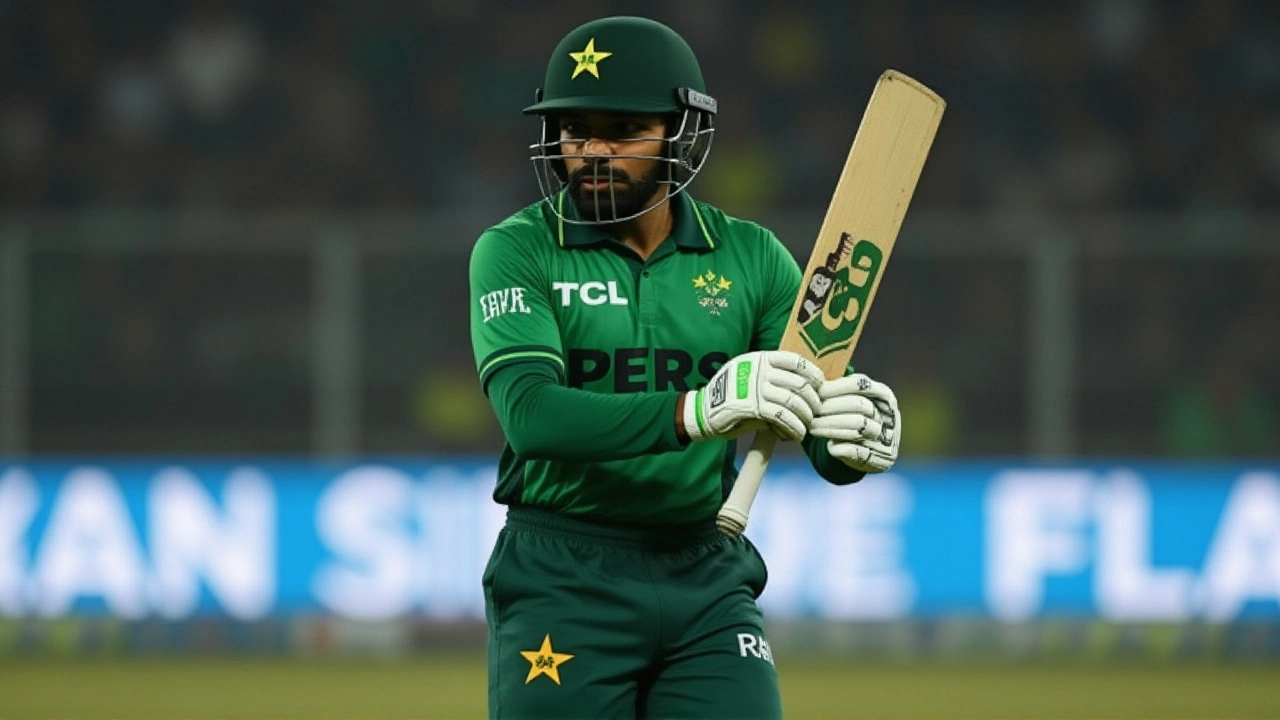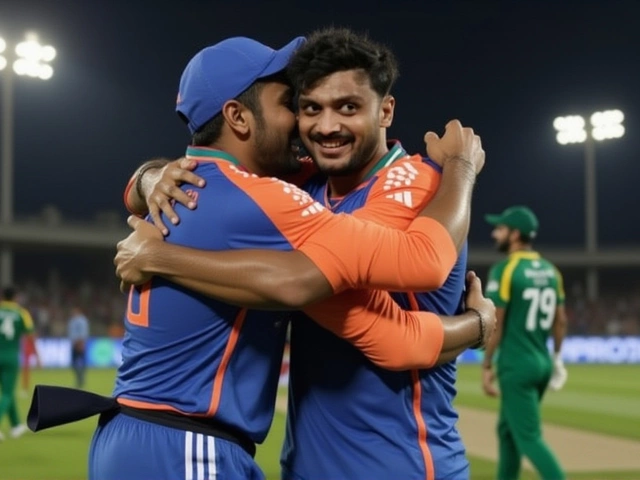When Babar Azam stepped onto the pitch at Rawalpindi Cricket Stadium on November 23, 2025, he wasn’t just playing for runs—he was playing for his legacy. After five dismal T20I innings averaging just 16.2, including two ducks, the former captain faced mounting pressure. Then, in front of a roaring home crowd, he delivered: 74 off 52 balls, seven boundaries, two sixes. It wasn’t just a knock. It was a redemption. Pakistan crushed Zimbabwe by 69 runs in the fourth T20I of the Tri-Nation Series, sealing their place in the final with their fifth straight win. The victory wasn’t just about Azam, though. It was about a team reshaping itself under new leadership, turning desperation into dominance.
From Crisis to Control: Babar Azam’s Turning Point
For 807 days, Babar Azam hadn’t scored a century in any format. That changed in an ODI against Sri Lanka just weeks before this match. But T20Is? They’d been a nightmare. Zero. Eleven not out. Sixty-eight. Zero. Sixteen. Critics questioned his fitness. Fans wondered if his technique was outdated for the modern game. Against Zimbabwe, he didn’t just survive—he thrived. He rotated strike early, punished loose deliveries, and accelerated when needed. His 74 came at a strike rate of 142.3, the highest in his last ten T20I innings. "He looked like the old Babar," said former Pakistan captain Inzamam-ul-Haq on live TV. "Not the guy who’s just defending. The guy who’s commanding. That’s the captain we need."
Bowling Firepower: Usman Tariq’s Hat-Trick Shatters Zimbabwe
Zimbabwe’s chase never had a chance. Openers Tadiwanashe Marumani and Brian Bennett were gone inside two overs. Brendan Taylor, the veteran, fell in the third. By the eighth over, Sikandar Raza—Zimbabwe’s best batter—was gone, leaving the tail exposed. Then came Usman Tariq. In the 10th over, he ripped through Zimbabwe’s middle order: Tony Munyonga caught behind, Tashinga Musekiwa lbw, Wellington Masakadza bowled. Hat-trick. The stadium erupted. Tariq finished with 4 for 18, the best T20I figures by a Pakistani bowler since 2022. "I just kept it simple," Tariq said post-match. "Line, length, trust your skills. They were chasing, not playing. That’s when you pounce."
Supporting him was Mohammad Nawaz, who took 2 for 23, including the crucial wicket of Azam himself—yes, the captain fell in the 17th over, but by then, Pakistan had already built an unassailable lead. Zimbabwe’s total of 126 in 19 overs was their lowest against Pakistan in T20Is since 2019.

The Fakhar Zaman Experiment: Dropping the Opener
One of the most surprising moves came from head coach Mike Hesson. Fakhar Zaman, Pakistan’s explosive opener for over a decade, was slotted at No. 7. Why? Hasan Nawaz was dropped after poor form, and Abdul Samad was injured. So Hesson gambled: put Fakhar lower down to accelerate in the death overs. It worked. He smashed 27 off just 10 balls—four sixes, one four. His strike rate? 270. "It’s not about where you bat," Fakhar said. "It’s about who you’re playing for. Today, I played for the team."
Wisden called it "a tactical masterstroke," noting that no regular opener in T20I history had batted as low as No. 7 in a high-stakes match and delivered such impact. The move signals a new era: Pakistan’s batting order is now fluid, not fixed. It’s not about roles anymore—it’s about match situations.
Why This Win Matters Beyond the Scoreboard
This wasn’t just another win. It was Pakistan’s fifth consecutive T20I victory—dating back to their Asia Cup campaign in September. They’ve now won 11 of their last 13 home T20Is. The Tri-Nation Series, featuring Sri Lanka and Zimbabwe, has become a testing ground for Hesson’s new-look side. With the final set for November 27, Pakistan will face either Sri Lanka or Zimbabwe. But the real story? The team’s identity is being rebuilt. Young bowlers like Tariq are stepping up. Veterans like Azam are rediscovering form. Even the fringe players—like Nawaz, who’s now a key all-rounder—are proving their worth.
Indian Express noted that Pakistan entered the match with a "three wins in three" target. They hit it. Times Now News called it "a statement win." And YouTube highlights from the Pakistan Cricket Board showed fans chanting, "Babar! Babar!"—a sound not heard often in the last two years.

What’s Next? The Final and the Bigger Picture
The final will be played on November 27 in Rawalpindi. If Sri Lanka beats Zimbabwe on November 25, they’ll face Pakistan. If Zimbabwe wins, they’ll be the underdogs. Either way, Pakistan’s momentum is undeniable. The selectors are now considering a permanent shift in batting order, with Fakhar potentially staying at No. 7 in future tournaments. Meanwhile, Azam’s resurgence has silenced doubters—for now. But the real test? The 2026 T20 World Cup. This series was a rehearsal. The final will be the audition.
Frequently Asked Questions
How did Babar Azam’s performance impact Pakistan’s chances in the tournament?
Babar Azam’s 74 off 52 balls was the cornerstone of Pakistan’s 195/5 total, breaking a five-innings slump where he averaged just 16.2. His innings restored confidence in the middle order and shifted momentum before Zimbabwe could build any pressure. Without it, Pakistan’s score might have been under 170, making the 69-run win unlikely. His performance also signaled a return to form ahead of the 2026 T20 World Cup.
Why was Fakhar Zaman batting at No. 7, and was this a strategic change?
Fakhar Zaman was moved to No. 7 due to injuries and form issues—Hasan Nawaz was dropped, and Abdul Samad was sidelined. Coach Mike Hesson wanted a power-hitter to accelerate in the final five overs. Fakhar’s 27 off 10 balls (SR 270) proved the tactic worked. This isn’t just a one-off; it signals a shift toward situational batting, not fixed roles, potentially reshaping Pakistan’s future T20I lineup.
What made Usman Tariq’s hat-trick so significant?
Tariq’s 4/18, including a hat-trick in the 10th over, was the best T20I bowling figures by a Pakistani since 2022. He dismissed three key middle-order batters—Munyonga, Musekiwa, and Masakadza—in consecutive balls, crushing Zimbabwe’s hopes. Only two Pakistani bowlers have taken a T20I hat-trick in home conditions since 2015. His performance marked him as a breakout star and a potential X-factor in the final.
How does this win affect Pakistan’s World Cup preparations?
Pakistan’s five-match winning streak and dominant home record (11 wins in 13 T20Is since 2023) show they’re peaking at the right time. The team’s new batting flexibility, emerging bowlers like Tariq, and Azam’s form are all positive signs. But the real test will be how they handle pressure in neutral venues. This series was a confidence-builder—now they must prove they can win abroad.
Who will Pakistan face in the final, and when is it scheduled?
Pakistan will face either Sri Lanka or Zimbabwe in the final on November 27, 2025, at Rawalpindi Cricket Stadium. Sri Lanka needs to beat Zimbabwe on November 25 to qualify; if Zimbabwe wins, they’ll face Pakistan as underdogs. Either way, Pakistan enters the final as favorites, riding high on momentum, home advantage, and a team that’s finally clicking on all cylinders.
Is this the end of Babar Azam’s captaincy struggles?
Not necessarily. Azam is no longer captain—Salman Ali Agha leads the side. But his performance has revived his case for leadership in high-pressure games. While he may not reclaim the captaincy immediately, his form makes him indispensable. If Pakistan wins the final and he remains the top scorer, pressure will mount to reappoint him for the World Cup. This innings wasn’t just about runs—it was about proving he still belongs at the top.






